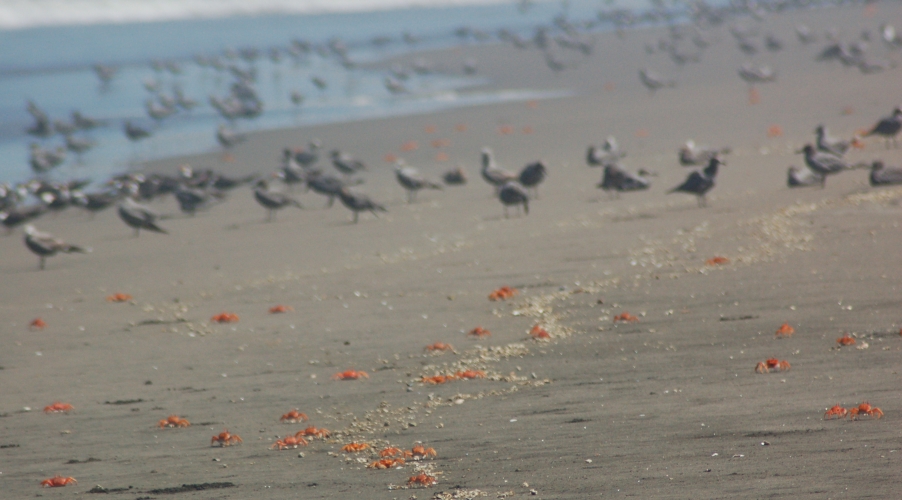Some people go to the beach to swim and suntan. We go to the beach to eat fish, and in this case, look at birds.
After two hours of downhill slaloming from Arequipa, the ocean breezes of Mollendo are a delightful relief. On second glance, the run-down buildings in the off-season remind one of dilapidated New England beaches. However, instead of serving up paper plates of fried dough and lobster, there is cebiche. A stroll through the town market reveals the sights and smells of heaps of whole fish, mollusks, and octopus. Long before Arequipeñas fled the city for weekend getaways, these raw ingredients have been combined with lime juice, chili peppers, and onions to purse lips and fill stomachs.
While cebiche is enjoyed all along the 2,400 kilometers of Peruvian coastline, the Lagunas de Mejía are a rare source of fresh water sandwiched between the barren desert and the Pacific Ocean. The lagoons occupy a brief 7 kilometer stretch outside of Mollendo – which feels much longer when walking in the glaring sun under the watchful eye of turkey vultures. In the lagoons, hundreds of species of birds stop to mingle, waddle and wade in a migratory cycle up and down the continent. Unfortunately, the same habitat that attracts flamingos and ducks also breed mosquitoes and other blood-sucking fiends.
Happily, the windy beach is always less than 500 feet away, and the hoards of crabs that litter the shoreline flee to their holes instead of biting us. A handful of fishermen dot the coast sneaking what fish they can alongside thousands of seabirds. Given the abundance of fish at the market, there’s clearly enough for both to coexist.



Leave a Reply